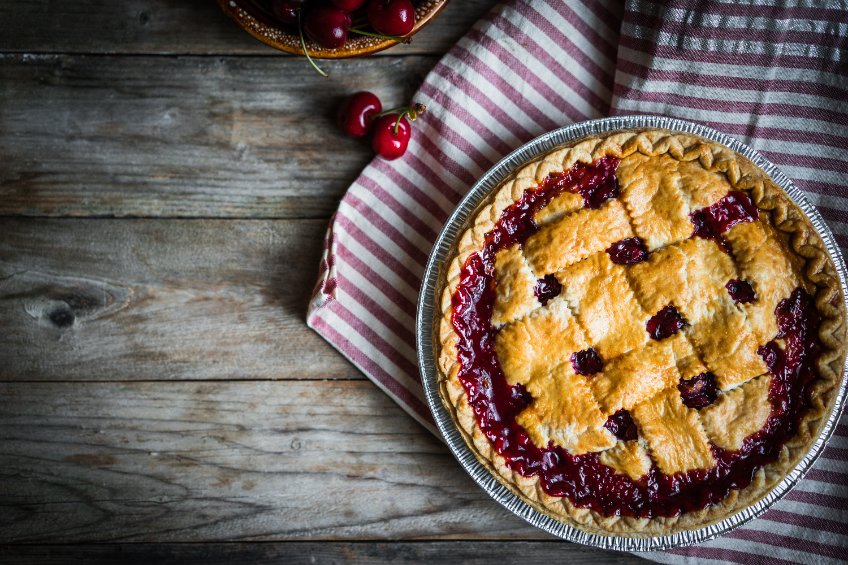
Baking is a blend of scientific principles and artistic expression.
The ingredients used, the method of preparation, and the actual baking process are all governed by chemical reactions.
While being a scientist is not a prerequisite for becoming an excellent baker, having a fundamental understanding of certain key concepts can be advantageous.
In this regard, it is essential to understand the science behind baking and how it relates to the practical aspect of creating delectable homemade treats.
To this end, we have compiled the most significant facts about the science of baking.
Salt Doesn’t Just Add Flavor – It Changes the Texture

Salt is not just a flavor enhancer; it can also play a crucial role in changing the texture of baked goods.
In baking, salt has a range of functions, including.
- Enhancing flavor. Salt enhances the flavor of baked goods by bringing out the natural sweetness of the ingredients used. It also balances the flavors, making them more complex and appealing to the taste buds.
- Controlling yeast growth. Salt controls the growth of yeast in the dough. Yeast is a living organism that produces carbon dioxide, which causes the dough to rise. However, too much yeast can lead to overproofing, resulting in a dense and gummy texture. Salt helps to slow down yeast growth, producing a better texture in the final baked product.
- Strengthening dough. Salt strengthens the gluten in the dough, which gives it its structure and helps it hold its shape. Without enough salt, the dough can become weak and slack, resulting in a flat and unappealing baked good.
- Retaining moisture. Salt helps to retain moisture in the baked goods, keeping them fresh for longer. It does this by slowing down the rate at which the moisture evaporates from the dough during baking.
In summary, salt is not just a flavoring agent but also a vital ingredient in baking that helps to control yeast growth, strengthen dough, and retain moisture.
By understanding how salt affects the texture of baked goods, bakers can use it more effectively to create delicious and appealing treats.
Baking Soda and Baking Powder Aren’t Interchangeable

Baking soda and baking powder are both leavening agents commonly used in baking, but they have different chemical compositions and functions.
Baking soda requires an acidic ingredient to activate its leavening power, while baking powder already contains both an acid and a base, making it suitable for recipes without acidic ingredients.
Using the wrong leavening agent or substituting one for the other can significantly affect the texture and taste of the finished baked goods.
Therefore, it is crucial to follow the recipe carefully and use the specified leavening agent to achieve the desired results and make delicious baked goods.
Sugar Does More Than Sweeten

Sugar is commonly used in baking to sweeten the flavor of baked goods, but its function in baking goes far beyond just adding sweetness.
Here are some ways sugar contributes to the success of baked goods.
- Enhancing flavor. As mentioned, sugar adds sweetness to baked goods, but it also enhances the flavor of other ingredients in the recipe. It can balance out the flavors, reduce bitterness, and create a more complex taste.
- Affecting texture. Sugar affects the texture of baked goods in many ways. It can create a tender crumb, add moisture, and improve the browning of the crust. It can also affect the structure and volume of baked goods, as sugar helps to tenderize gluten and create air pockets during the creaming process.
- Preserving freshness. Sugar helps to preserve the freshness of baked goods by inhibiting the growth of bacteria and mold. It does this by drawing moisture away from the baked goods, making it less available to the microorganisms that cause spoilage.
- Aiding in caramelization. When sugar is heated, it undergoes a process called caramelization, which creates a brown color and a rich, complex flavor. This is particularly important in recipes such as caramel sauce or crème brûlée.
In summary, sugar is not only used to sweeten baked goods, but it also plays a crucial role in enhancing flavor, affecting texture, preserving freshness, and aiding in caramelization.
Understanding the function of sugar in baking can help bakers use it more effectively to create delicious and appealing treats.
You Can Substitute Eggs with the Right Alternatives
 Baking uses eggs to improve the leavening process, add flavor, and emulsify the ingredients to get the perfect texture.
Baking uses eggs to improve the leavening process, add flavor, and emulsify the ingredients to get the perfect texture.
Substituting eggs is difficult in baking, due to there being just a few alternatives that act the same way on a chemical level.
If you want to cut down on eggs for any reason, you could try using mashed banana.
This can provide similar benefits during mixing and the cooking process.
65 grams (around 1/2 cup) of mashed banana is equivalent to a single egg.
Your recipes will taste and look a little different, but the texture will be close.
You could also try a prepared alternative like this Vegan Egg Replacer.
It’s gluten-free and non-GMO.
Experiment with Baking and Enjoy the Journey
 You don’t need to get caught up in the science of baking, even when you know some of the basic chemical properties of your ingredients.
You don’t need to get caught up in the science of baking, even when you know some of the basic chemical properties of your ingredients.
Experimentation is important.
You can gain an intuitive sense of what works and what doesn’t.
Over time, choosing and mixing ingredients will become second nature, and you’ll even develop variations of recipes that are unique to your kitchen.


